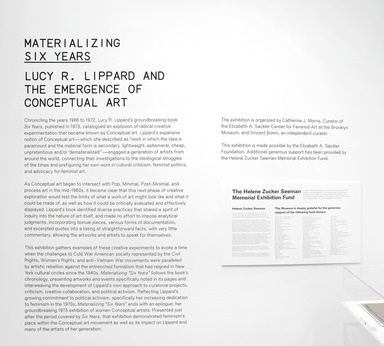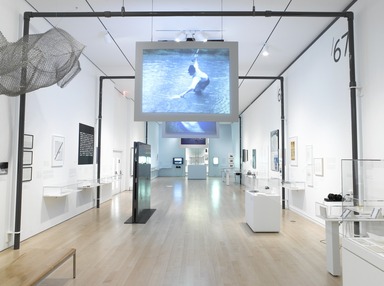

Materializing 'Six Years': Lucy R. Lippard and the Emergence of Conceptual Art, September 14, 2012 through February 17, 2013 (Image: DIG_E_2012_Six_Years_01_PS4.jpg Brooklyn Museum photograph, 2012)

Materializing 'Six Years': Lucy R. Lippard and the Emergence of Conceptual Art, September 14, 2012 through February 17, 2013 (Image: DIG_E_2012_Six_Years_02_PS4.jpg Brooklyn Museum photograph, 2012)

Materializing 'Six Years': Lucy R. Lippard and the Emergence of Conceptual Art, September 14, 2012 through February 17, 2013 (Image: DIG_E_2012_Six_Years_03_PS4.jpg Brooklyn Museum photograph, 2012)

Materializing 'Six Years': Lucy R. Lippard and the Emergence of Conceptual Art, September 14, 2012 through February 17, 2013 (Image: DIG_E_2012_Six_Years_04_PS4.jpg Brooklyn Museum photograph, 2012)
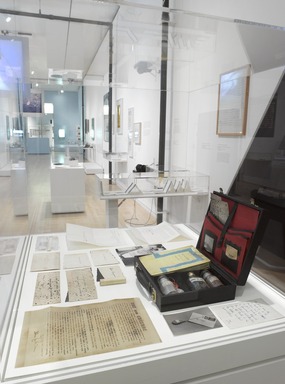
Materializing 'Six Years': Lucy R. Lippard and the Emergence of Conceptual Art, September 14, 2012 through February 17, 2013 (Image: DIG_E_2012_Six_Years_05_PS4.jpg Brooklyn Museum photograph, 2012)
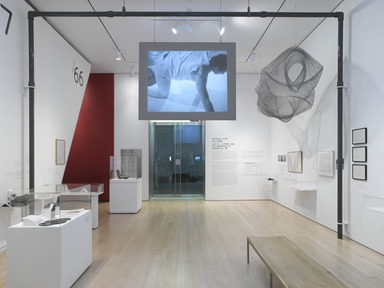
Materializing 'Six Years': Lucy R. Lippard and the Emergence of Conceptual Art, September 14, 2012 through February 17, 2013 (Image: DIG_E_2012_Six_Years_06_PS4.jpg Brooklyn Museum photograph, 2012)

Materializing 'Six Years': Lucy R. Lippard and the Emergence of Conceptual Art, September 14, 2012 through February 17, 2013 (Image: DIG_E_2012_Six_Years_07_PS4.jpg Brooklyn Museum photograph, 2012)
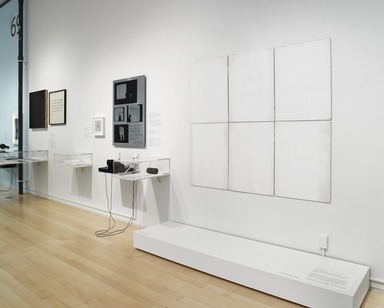
Materializing 'Six Years': Lucy R. Lippard and the Emergence of Conceptual Art, September 14, 2012 through February 17, 2013 (Image: DIG_E_2012_Six_Years_08_PS4.jpg Brooklyn Museum photograph, 2012)

Materializing 'Six Years': Lucy R. Lippard and the Emergence of Conceptual Art, September 14, 2012 through February 17, 2013 (Image: DIG_E_2012_Six_Years_09_PS4.jpg Brooklyn Museum photograph, 2012)
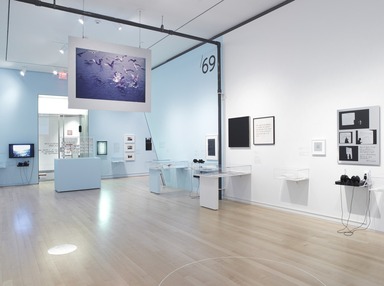
Materializing 'Six Years': Lucy R. Lippard and the Emergence of Conceptual Art, September 14, 2012 through February 17, 2013 (Image: DIG_E_2012_Six_Years_10_PS4.jpg Brooklyn Museum photograph, 2012)
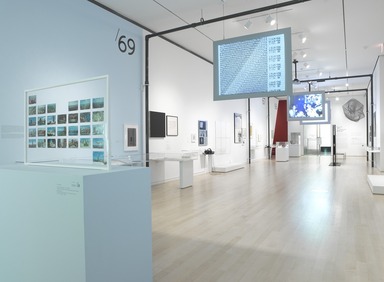
Materializing 'Six Years': Lucy R. Lippard and the Emergence of Conceptual Art, September 14, 2012 through February 17, 2013 (Image: DIG_E_2012_Six_Years_11_PS4.jpg Brooklyn Museum photograph, 2012)
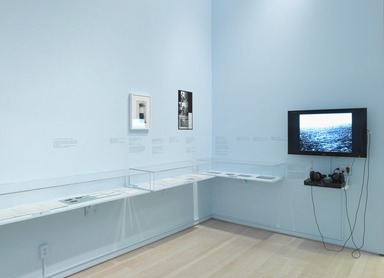
Materializing 'Six Years': Lucy R. Lippard and the Emergence of Conceptual Art, September 14, 2012 through February 17, 2013 (Image: DIG_E_2012_Six_Years_12_PS4.jpg Brooklyn Museum photograph, 2012)
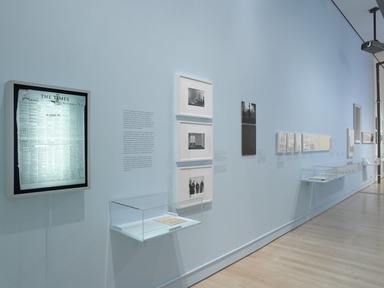
Materializing 'Six Years': Lucy R. Lippard and the Emergence of Conceptual Art, September 14, 2012 through February 17, 2013 (Image: DIG_E_2012_Six_Years_13_PS4.jpg Brooklyn Museum photograph, 2012)

Materializing 'Six Years': Lucy R. Lippard and the Emergence of Conceptual Art, September 14, 2012 through February 17, 2013 (Image: DIG_E_2012_Six_Years_14_PS4.jpg Brooklyn Museum photograph, 2012)
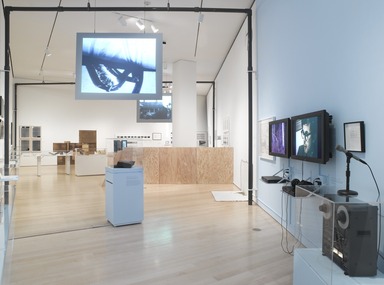
Materializing 'Six Years': Lucy R. Lippard and the Emergence of Conceptual Art, September 14, 2012 through February 17, 2013 (Image: DIG_E_2012_Six_Years_15_PS4.jpg Brooklyn Museum photograph, 2012)
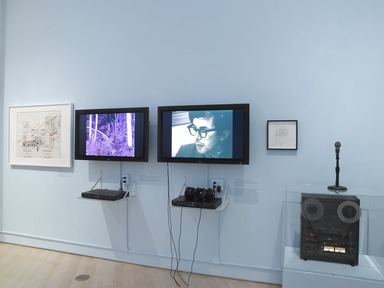
Materializing 'Six Years': Lucy R. Lippard and the Emergence of Conceptual Art, September 14, 2012 through February 17, 2013 (Image: DIG_E_2012_Six_Years_16_PS4.jpg Brooklyn Museum photograph, 2012)

Materializing 'Six Years': Lucy R. Lippard and the Emergence of Conceptual Art, September 14, 2012 through February 17, 2013 (Image: DIG_E_2012_Six_Years_17_PS4.jpg Brooklyn Museum photograph, 2012)
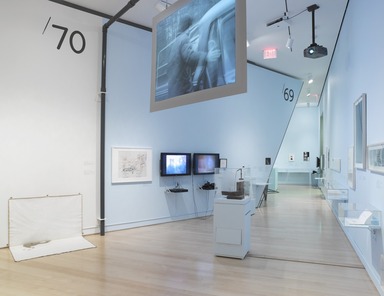
Materializing 'Six Years': Lucy R. Lippard and the Emergence of Conceptual Art, September 14, 2012 through February 17, 2013 (Image: DIG_E_2012_Six_Years_18_PS4.jpg Brooklyn Museum photograph, 2012)
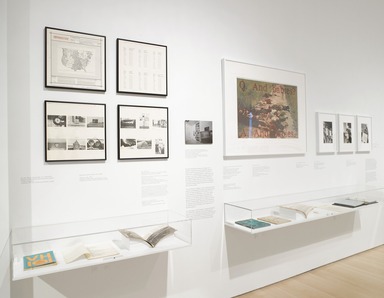
Materializing 'Six Years': Lucy R. Lippard and the Emergence of Conceptual Art, September 14, 2012 through February 17, 2013 (Image: DIG_E_2012_Six_Years_19_PS4.jpg Brooklyn Museum photograph, 2012)

Materializing 'Six Years': Lucy R. Lippard and the Emergence of Conceptual Art, September 14, 2012 through February 17, 2013 (Image: DIG_E_2012_Six_Years_20_PS4.jpg Brooklyn Museum photograph, 2012)
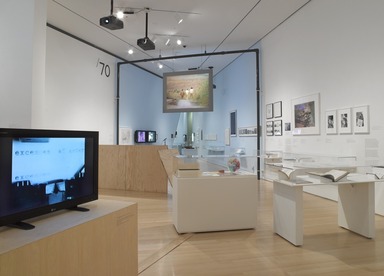
Materializing 'Six Years': Lucy R. Lippard and the Emergence of Conceptual Art, September 14, 2012 through February 17, 2013 (Image: DIG_E_2012_Six_Years_21_PS4.jpg Brooklyn Museum photograph, 2012)

Materializing 'Six Years': Lucy R. Lippard and the Emergence of Conceptual Art, September 14, 2012 through February 17, 2013 (Image: DIG_E_2012_Six_Years_22_PS4.jpg Brooklyn Museum photograph, 2012)
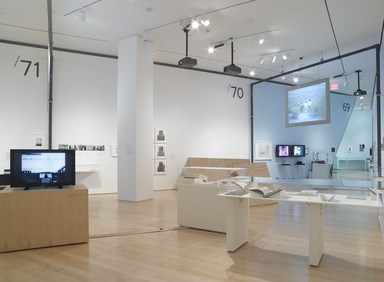
Materializing 'Six Years': Lucy R. Lippard and the Emergence of Conceptual Art, September 14, 2012 through February 17, 2013 (Image: DIG_E_2012_Six_Years_23_PS4.jpg Brooklyn Museum photograph, 2012)

Materializing 'Six Years': Lucy R. Lippard and the Emergence of Conceptual Art, September 14, 2012 through February 17, 2013 (Image: DIG_E_2012_Six_Years_24_PS4.jpg Brooklyn Museum photograph, 2012)

Materializing 'Six Years': Lucy R. Lippard and the Emergence of Conceptual Art, September 14, 2012 through February 17, 2013 (Image: DIG_E_2012_Six_Years_25_PS4.jpg Brooklyn Museum photograph, 2012)

Materializing 'Six Years': Lucy R. Lippard and the Emergence of Conceptual Art, September 14, 2012 through February 17, 2013 (Image: DIG_E_2012_Six_Years_26_PS4.jpg Brooklyn Museum photograph, 2012)
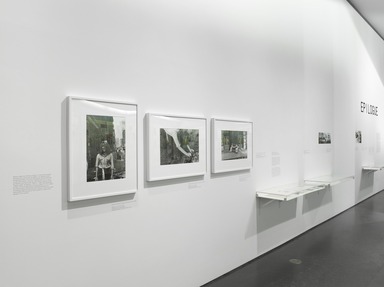
Materializing 'Six Years': Lucy R. Lippard and the Emergence of Conceptual Art, September 14, 2012 through February 17, 2013 (Image: DIG_E_2012_Six_Years_27_PS4.jpg Brooklyn Museum photograph, 2012)

Materializing 'Six Years': Lucy R. Lippard and the Emergence of Conceptual Art, September 14, 2012 through February 17, 2013 (Image: DIG_E_2012_Six_Years_28_PS4.jpg Brooklyn Museum photograph, 2012)
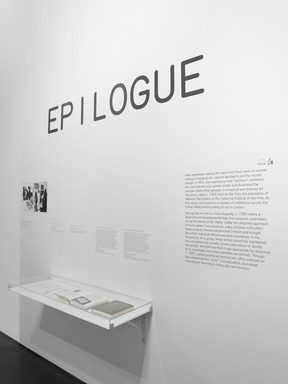
Materializing 'Six Years': Lucy R. Lippard and the Emergence of Conceptual Art, September 14, 2012 through February 17, 2013 (Image: DIG_E_2012_Six_Years_29_PS4.jpg Brooklyn Museum photograph, 2012)
Materializing 'Six Years': Lucy R. Lippard and the Emergence of Conceptual Art
-
MATERIALIZING SIX YEARS LUCY R. LIPPARD AND THE EMERGENCE OF CONCEPTUAL ART
Chronicling the years 1966 to 1972, Lucy R. Lippard’s groundbreaking book Six Years, published in 1973, catalogued an explosion of radical creative experimentation that became known as Conceptual art. Lippard’s expansive notion of Conceptual art—which she described as “work in which the idea is paramount and the material form is secondary, lightweight, ephemeral, cheap, unpretentious and/or ‘dematerialized’”—engaged a generation of artists from around the world, connecting their investigations to the ideological struggles of the times and prefiguring her own work in cultural criticism, feminist politics, and advocacy for feminist art.
As Conceptual art began to intersect with Pop, Minimal, Post-Minimal, and process art in the mid-1960s, it became clear that this next phase of creative exploration would test the limits of what a work of art might look like and what it could be made of, as well as how it could be critically evaluated and effectively displayed. Lippard’s book identified diverse practices that shared a spirit of inquiry into the nature of art itself, and made no effort to impose analytical judgments, incorporating textual pieces, various forms of documentation, and excerpted quotes into a listing of straightforward facts, with very little commentary, allowing the artworks and artists to speak for themselves.
This exhibition gathers examples of these creative experiments to evoke a time when the challenges to Cold War American society represented by the Civil Rights, Women’s Rights, and anti–Vietnam War movements were paralleled by artistic rebellion against the entrenched formalism that had reigned in New York cultural circles since the 1940s. Materializing “Six Years” follows the book’s chronology, presenting artworks and events specifically noted in its pages and interweaving the development of Lippard’s own approach to curatorial projects, criticism, creative collaboration, and political activism. Reflecting Lippard’s growing commitment to political activism, specifically her increasing dedication to feminism in the 1970s, Materializing “Six Years” ends with an epilogue: her groundbreaking 1973 exhibition of women Conceptual artists. Presented just after the period covered by Six Years, that exhibition demonstrated feminism’s place within the Conceptual art movement as well as its impact on Lippard and many of the artists of her generation. -
EPILOGUE
After repeatedly hearing the claim that there were no women making Conceptual art, Lippard decided to set the record straight. In 1973, she organized a final “numbers” exhibition; this one featured only women artists and illustrated the complex relationship between Conceptual and feminist art. The show, called c. 7,500, took its title from the population of Valencia, the location of the California Institute of the Arts, its first venue, and toured to a number of institutions across the United States before ending its run in London.
Ideologically as well as chronologically, c. 7,500 marks a departure and developmental leap from projects undertaken during the period of Six Years. Unlike the detached approach of much earlier Conceptual art, many of these instruction-based projects introduced personal content and brought the artists’ individual differences and experiences to the foreground. As a group, these artists powerfully highlighted the conceptual and socially constructed nature of identity and gender, and affirmed that it was appropriate for advanced art to investigate how these identities are formed. Through c. 7,500, Lippard positioned feminist art, often criticized as less intellectual than “pure” Conceptualism, as instead extending its theoretical claims into new territory.
-
April 1, 2012
Materializing “Six Years”: Lucy R. Lippard and the Emergence of Conceptual Art, the first exhibition to explore the impact of the feminist writer, curator, and activist Lucy R. Lippard on the Conceptual art movement, will be on view at the Brooklyn Museum September 14, 2012, through February 3, 2013. Using Lippard’s influential 1973 book Six Years, which catalogued and described the emergence of Conceptual art in the late sixties and early seventies, as a critical and chronological framework, the exhibition illustrates the dynamics of Lippard’s key role in redefining how exhibitions were created, viewed, and critiqued during that era of transition.
The full title of Lippard’s now-classic book, which drew on her personal relationships with artists, is seventy-nine words long: Six Years: The dematerialization of the art object from 1966 to 1972: a cross-reference book of information on some esthetic boundaries; consisting of a bibliography into which are inserted a fragmented text, art works, documents, interviews, and symposia, arranged chronologically and focused on so-called conceptual or information or idea art with mentions of such vaguely designated areas as minimal, anti-form, systems, earth, or process art, occurring now in the Americas, Europe, England, Australia and Asia (with occasional political overtones). Through what appeared to be an objective chronology of events, exhibitions, writings, and ideas, Six Years presented a remarkable catalogue of groundbreaking work by young artists challenging the status quo of the art world.
The exhibition, which will include some 173 works, will be arranged chronologically, with sections focusing on each of the years covered in Lippard’s landmark book, along with a concluding section exploring the relationship between Conceptual and feminist art.
1966. This section highlights works from Lippard’s landmark exhibition Eccentric Abstraction, including sculptures by Eva Hesse, Louise Bourgeois, and Alice Adams, alongside original gallery announcements and installation photographs. It traces the evolution of some artists toward transient, performance projects and the increasing importance of the printed word. It also documents key works such as Robert Morris’s outdoor intervention Steam Cloud (1966), Bruce Nauman’s rarely seen film Fishing for Asian Carp (1966) and John Latham’s Art and Culture (1966–69).
1967. The section reflects the growing internationalism of Conceptual art with work by artists including the Canadians Michael Snow and Christine Kozlov and European collectives such as Art & Language and Buren, Mosset, Parmentier, and Torino (BMPT). Also explored here is the growing importance of the periodical as a means of distribution and an alternate site of display as well as investigations into the production of meaning through works such as the collective Art & Language’s The Air Conditioning Show, featuring an empty gallery with temperature-controlled air as its content.
1968. This section shows how American artists’ challenge to institutions and definitions of art became more closely aligned with issues surrounding opposition to the Vietnam War. Works include Hans Haacke’s Live Random Airborne System (1965-68), along with works by the Latin American artists Graciela Carneval and the Rosario Group that made political art in covert ways, for their own safety, while working under a dictatorship.
1969. This section traces how the organizing of exhibitions underwent major changes as the emphasis on text and the documentation of ephemeral occurrences became primary means of art-making. Lippard launched a multi-year curatorial project known as the “numbers” shows, the titles of which were taken from the population figure of the city where each appeared. The exhibitions featured works primarily produced from instructions that participating artists provided to Lippard on index cards, which became the exhibition catalogues. Examples will be included along with reconstructions of some projects; for example, a plywood work by Richard Serra along with his instruction card and photographic documentation of its second installation, in Vancouver.
1970. This section highlights Lippard’s involvement with the Art Workers’ Coalition and also continues to focus on her portable exhibitions-as-instructions, 955,000 in Vancouver and 2,972,543 in Buenos Aires, with documentary photographs, catalogue cards, and selected works from each exhibition. Catalogues from other experimental exhibitions throughout the world will also be included.
1971. This section explores the forward trajectory of Conceptual art, as idealism gave way to pessimism in the 1970s, with some artists continuing activist politics through their work, as exemplified by the Guerrilla Art Action Group, while others, like William Wegman, focused on performance, as in videos such as his Spit Sandwich. Women Conceptualists became more prevalent and Lippard became more committed to recognizing the work of women and anticipating feminist art as the next major movement—one in which she would become a defining voice.
The exhibition has been organized by Catherine Morris, curator of the Elizabeth A. Sackler Center for Feminist Art at the Brooklyn Museum, and Vincent Bonin, a Montreal-based independent curator and writer. It will be accompanied by a fully illustrated catalogue, with a preface by Lucy R. Lippard and essays by the co-curators as well as Julia Bryan-Wilson, associate professor of art history at UC Berkeley. One of the first publications to explore the influence of Lippard’s thinking on the Conceptual art movement, it is being co-published by the Brooklyn Museum and the M.I.T. Press.
Lucy R. Lippard is the author of twenty-one books on contemporary art, politics, place, and culture, most recently Down Country: The Tano of the Galisteo Basin 1250–1782 (2010); On the Beaten Track: Tourism, Art and Place (1999); and The Lure of the Local: Senses of Place in a Multicentered Society (1997). She has curated more than fifty exhibitions and has participated in the founding of many alternative spaces and visual art and political collectives. Her achievements have been recognized with numerous awards and grants and eight honorary degrees. She lives in Galisteo, New Mexico.
Press Area of Website
View Original
